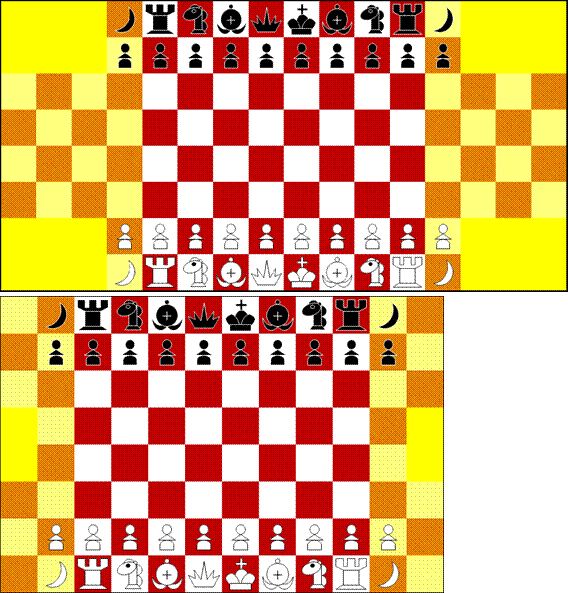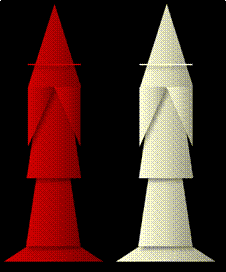Sage Chess
Sage Chess was a chess variant that was available for online play on the website sagechess.com until the site was removed. The website called this variantthe new way to play chess.
Setup
Sage Chess was played with 2 possible boards, the basic variant was played on a board of 16 by 8 and the small variant was played on one of 12 by 8. A new piece, the Sage, is added on both sides of White and Black, to the left of the leftmost rooks and the right of the rightmost rooks. An extra pawn stands in front of each Sage. In addition, 6 of the corner squares were covered in a 3-by-2 fashion in each corner in the basic variant, whereas the 2 central squares are covered on each side in the small variant. The picture below is from a scan of the original rules given on the website:
The picture below is from a scan of the original rules given on the website:

Interactive Diagram
Rules
Normal chess rules apply. The Sage (or Wizard) moves horizontally, vertically or diagonally up to 3 squares. That is, the Sage is a 3-square Queen. The files on which the Sages start on, as well as the extra files on which no pieces start on, are tinted yellow and called Sage Zones
. The main function of the Sage Zones is to obstruct pieces, though more specifically Pawns, as the covered squares could not be occupied by any piece, Pawns will run the risk of running into a wall
if they captured a piece and ended up in one of the Sage Zones, thus preventing them from promoting until they capture another piece that brings them back out.

Notes
There exists an opening line calledThe Canadian Opening, which was invented by Brian Grady. The description of the opening lines stated that it has
bishops sliding immediately out into the Sage Zone and it was said to be
a strategic spot for a SAGE attack. However, nothing else about the opening was stated in the rules page.
 This 'user submitted' page is a collaboration between the posting user and the Chess Variant Pages. Registered contributors to the Chess Variant Pages have the ability to post their own works, subject to review and editing by the Chess Variant Pages Editorial Staff.
This 'user submitted' page is a collaboration between the posting user and the Chess Variant Pages. Registered contributors to the Chess Variant Pages have the ability to post their own works, subject to review and editing by the Chess Variant Pages Editorial Staff.
Author: Andrew Wong.
Last revised by H. G. Muller.
Web page created: 2015-08-09. Web page last updated: 2025-03-30
